Fishing Roundup: Tarpon talk hasn't slowed; did you know they come up for air?
Well, if you haven’t caught your tarpon yet this summer, it’s not because you aren’t getting a chance.
The T-word pops up every week here from those who check in with what they’re seeing and/or hearing on the local fishing scene. That’s not totally unusual for this time of year, but man, there just seems to be more tarpon chatter than any time in recent memory.
And not just in and just outside the inlets, or just offshore in the north and southbound troughs of the Atlantic. But back in the intracoastal, sometimes far back.
Ike Leary sees it from the rear window of his Granada Bait shop in Ormond Beach. It’s nothing for him to look to the long fishing pier behind the shop and see someone battling a battle-ready Silver King from the planks.
GOT CRABS? Too hot to fish? Get yourself a trap and find some blue crabs | Fishing Roundup
“We usually see one or two a week, but this summer we’re seeing one or two a day, usually in the 30-pound range,” Ike says.
Ted Williams, the greatest hitter who ever lived, was also among the greatest fishermen of his generation. One of the best fishing books you’ll ever read was written by Ted with the help of John Underwood in the early 1980s — “Fishing the Big Three: Tarpon, Bonefish, Atlantic Salmon.”
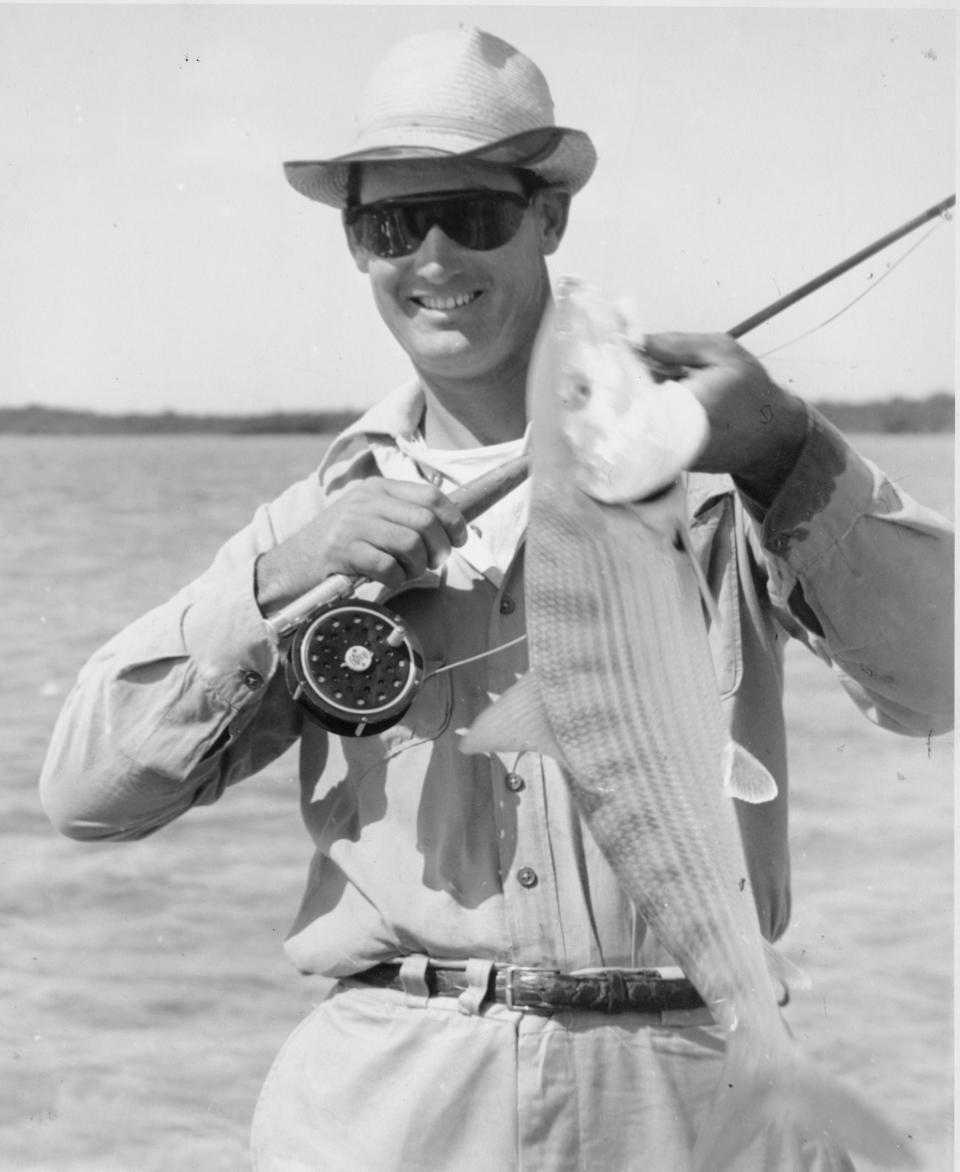
Ted generally fished for tarpon off the Florida Keys, in waters where the tarpon grew to its max of 6-plus feet and 100-plus pounds. Teddy Ballgame's world-class passion and intensity wasn’t reserved for the batter’s box.
“Your line has to be just right, your knots have to be just right,” he wrote. “Everything has to be just right, including your nerves, because taking on a fighting machine that’s liable to be almost as big as you are, that’s leaping around so close you think he’s going to jump in the boat — which has happened to a lot of anglers, including me — is not a thrill you’d want to have cut short.
“The first time a 125-pound silver rocket goes off 20 feet from your skiff, gills jangling, water flying, you’ll know what brought you to tarpon fishing. Every time it happens, it will take your breath away.”
Hubba-hubba.
After several weeks of tarpon chatter, it finally felt like a good time to dig into the literature to both learn and remind ourselves of some interesting tarpon facts.
● Anglers speak romantically of seeing a tarpon “rolling” up on the water surface. It’s almost as if it’s saying, “here I am, let’s have a fight.”
Actually, the tarpon is coming up for air. That’s right, air! Along with its usual fish innards, the tarpon is equipped with a swim bladder. When it comes to the surface, it’s taking in additional oxygen, for a couple of reasons.
First, tarpon aren’t afraid to hang out way inshore, sometimes in pockets of water where there’s not enough flow, and therefore not enough oxygen, to placate most fish of their size. The ability to come up for a gulp of air gives them plenty of homesteading options.
It’s also why you’re more likely to see tarpon rolling up in the early morning, since the sun hasn’t yet filled the water with additional oxygen — it’s cosmic magic of some sort and went right over my head, so to speak.
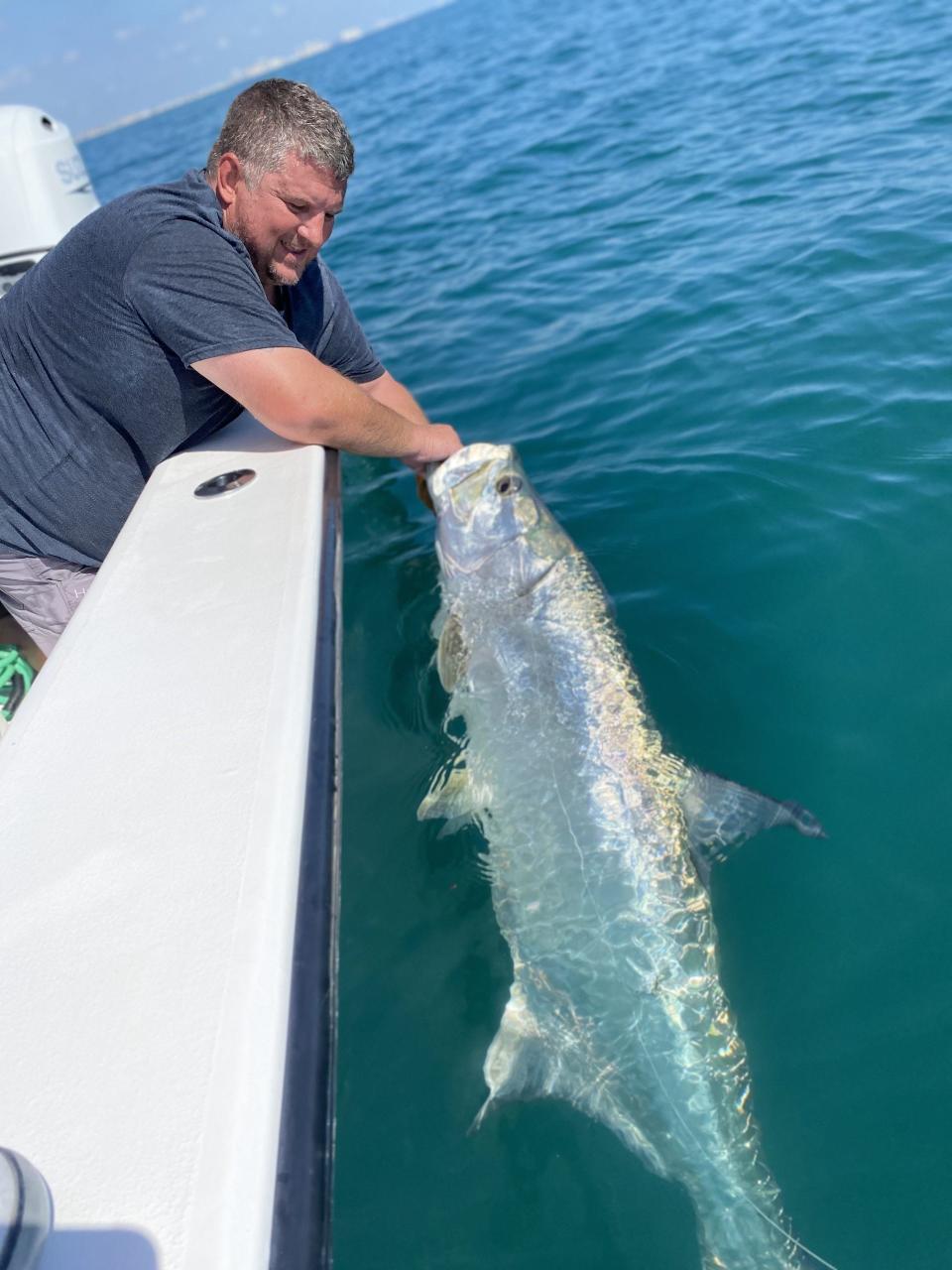
The benefit of a supplemental oxygen tank, it’s believed, is what also helps the tarpon produce its extraordinary fighting abilities. When most fish would begin to give out, the tarpon is cracking its knuckles and preparing to give you both barrels.
● Nope, you don’t eat tarpon. Too many small bones throughout its flesh.
That inedible status might be what has helped sustain them for an extremely long time, even by fish standards — some 113 million years, give or take.
● For such a battler, the tarpon is treated in a rather sensitive manner by the authorities. A juvenile tarpon — less than 40 inches — can be brought up for a quick photo-op and then quickly returned to the water.
Bigger tarpon must remain in the water during hook removal.
● They’ll eat just about anything thrown their way, from live bait to cutbait to artificials, but are known to be finicky about when they bite. Hookups aren’t a given, by any means.
With no teeth, they gulp their prey. The tarpon mouth is harder than the cell door and surfaced like sandpaper. Hard hook-sets are a must, assuming you get lucky.
Halifax/Indian River
We’ll get deeper into this sometime in the weeks ahead, but miracle of miracles, the grass seems to be returning to the lagoon. In droves, too.
“It surprised the devil out of me,” says Dick Sizemore, longtime local angler who lives on the intracoastal in Edgewater. “The manatees were wearing it out there for a while, but in spite of that there seems to be a bunch of grass coming back. It’s just Mother Nature, I guess.”
Anecdotally, anyway, the bulk of growth seems to be from Edgewater south toward Mosquito Lagoon, Haulover, and farther south. Art Mowery fishes those areas and also says “it’s sorta surprising.”
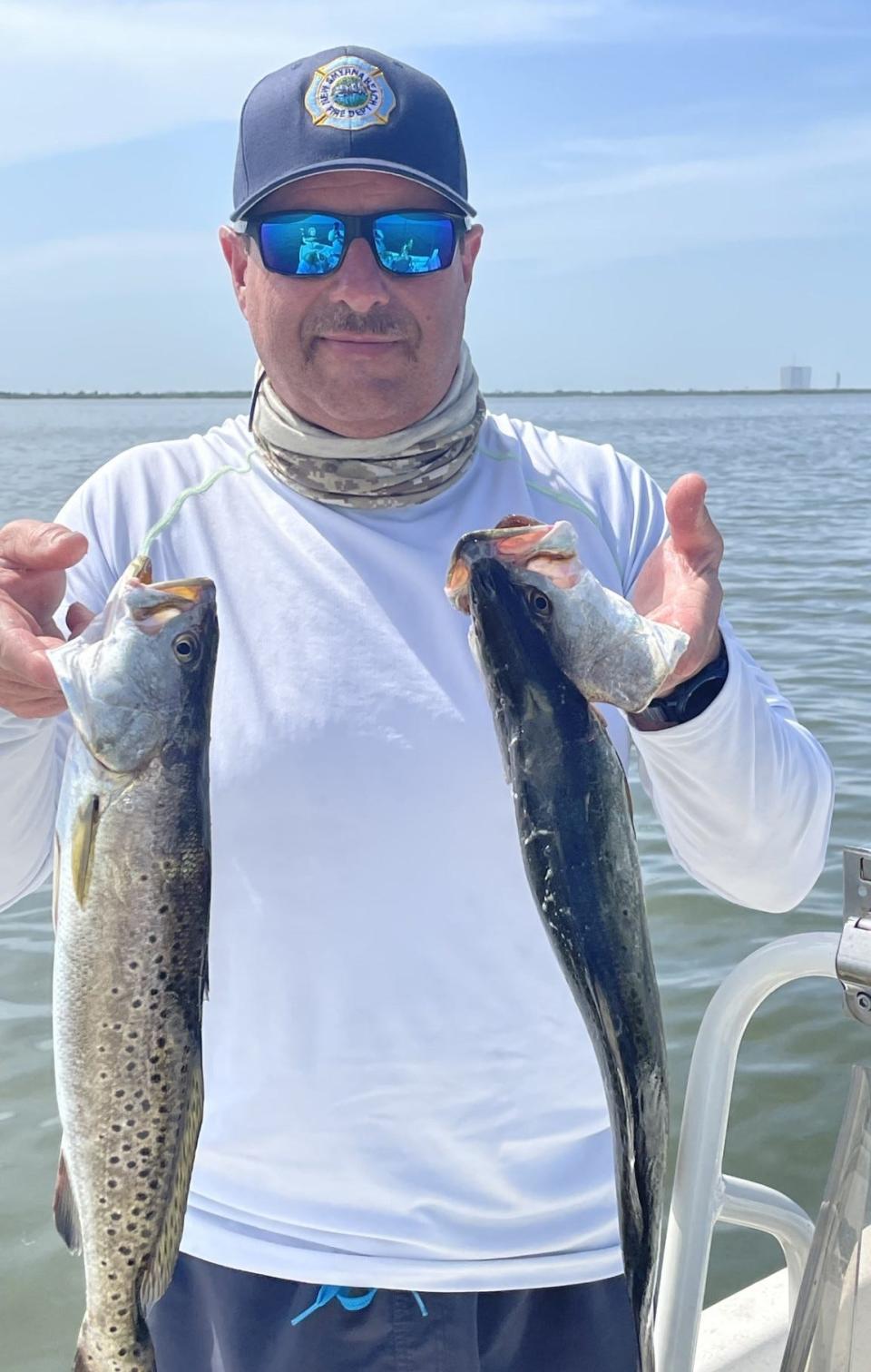
“It’s mostly on the east side of the lagoon, but there’s some on the west side, too," Art says. "There’s more than there was last year. I’m starting to pull grass off my hooks again. I used to get so much of it, it would get annoying.”
Meanwhile, while folks are seeing more tarpon than usual — and more grouper in the river, Ike Leary says — it’s still the mangrove snapper that rule the quality summertime catches.
“I’ve been doing good with live shrimp, but mudminnows and small finger mullet have seemed to get you into some better-sized fish,” says Capt. Jeff Patterson (Pole Dancer charter). “The redfish bite has still been kind of hit or miss, but seems to be getting more consistent with slot and over-slot fish around the jetties.”
Big snook have been hitting big shrimp and pinfish throughout the river. They come off the no-no list Sept. 1, but until further notice, that slender slot of 28-32 inches remains.
Blue crabs remain abundant throughout the river, to say the least.
Offshore
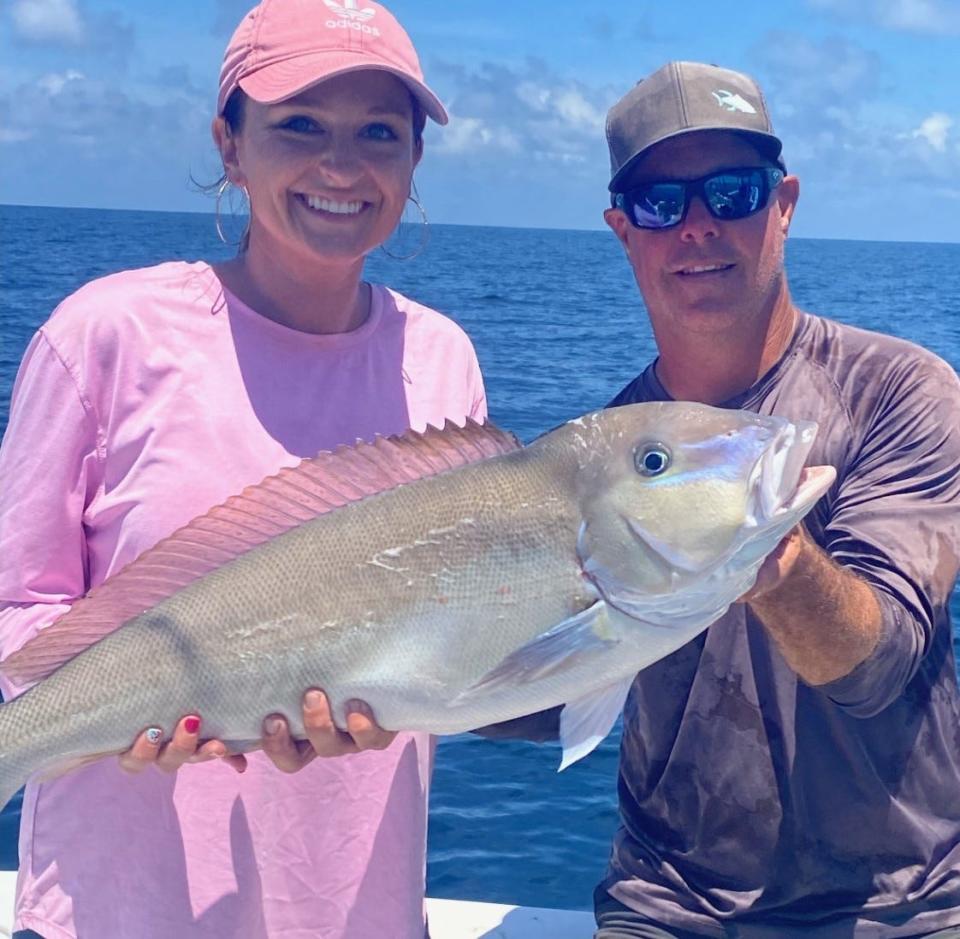
The state record for blueline tilefish is 10.5 pounds. Capt. Scott Housel (Sudden Strike charter) had a client pull one up last week that tipped the scales at 13.65 pounds. Turns out, Capt. Scott says, the FWC biologist who weighed and measured the fish wasn’t an official “weigh master,” so the record book won’t be rewritten.
Bigger mangroves are still plentiful in the 80-120-foot range, with cobia there too, going after live and cutbait.
“Fishing has been solid,” Capt. Scott says.
Surf
More of the same.
More pompano than we’re accustomed to hosting this time of year, along with plenty of whiting and jacks.
We might see a slight (slight!) dip in water temps during the week ahead. Maybe that’ll bring some variety closer to the nearshore troughs.
Flagler
Along with whiting and some pompano (and catfish, of course) the surf is also turning up occasional flounder and, yes, tarpon.
The intracoastal is seeing mangrove snapper, ladyfish, jacks and aforementioned tarpon. Capt. Mike Vickers (Hammock Bait) says reports of black drum have increased from canals, creeks and flats.
St. Johns
Early and late remains the key.
Early if you’re built that way, late if the bugs aren’t bloodthirsty.
Bluegill and warmouth are there before and after the water is hottest, while a here-and-there striped bass can be found near the springs.
We’re now about two weeks away from the Mr. Mud mudfish tournament out of Highland Park Fish Camp in DeLand. It’s not often you’re happy to see the butt-ugly bowfin, but the $1,000 first prize might make him look downright handsome.
Hook, line and clicker: Send us your fish pics
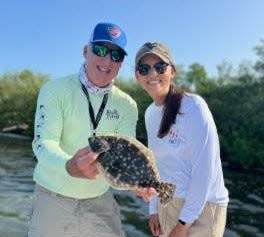
We want to see your most recent catch. Email your fish photos to ken.willis@news-jrnl.com.
Please include first and last name of angler(s), as well as type of fish (we're occasionally stumped). All are included with our online fishing report, and some occasionally make the print edition.
Do I need a fishing license?
You can find all the license info, including exemptions, on Florida's Fish and Wildlife Commission website: MyFWC.com. But the basics are: No: If you're 65 or older, 15 or younger, you don't need a license. No: If you're fishing with a licensed guide or charter boat, both of which purchase commercial licenses that cover their customers. Yes: Most everyone else, including visitors from other states. Yes: Even if you're a shore-based angler (shoreline, dock, pier, bridge, etc.). However: The shore-based license is free . . . But: You still need to register for that free license.
Where do I get a license and what does it cost?
Many bait shops sell licenses, as do the bigger retailers (Bass, Dick's, Walmart, etc.). Florida's FWC uses a third-party site for buying or renewing fishing licenses: GoOutdoorsFlorida.com. The cost: $17 for an annual license. Don't forget: Whether you're fishing fresh or saltwater, you need the specific license. Freshwater and saltwater licenses are both $17 annually.
I’m here on vacation, do I need a license?
Yes you do, and they're also available at GoOutdoorsFlorida.com or certain bait shops and big retailers. Cost: $17 for three days, $30 for seven days, $47 for a year.Also: Non-residents need to purchase that license even if they're just fishing from shoreline or shore-based structures. (Florida residents need that license, too, but they're free.)
This article originally appeared on The Daytona Beach News-Journal: Tarpon talk hasn't cooled; guess why they roll above the water surface

